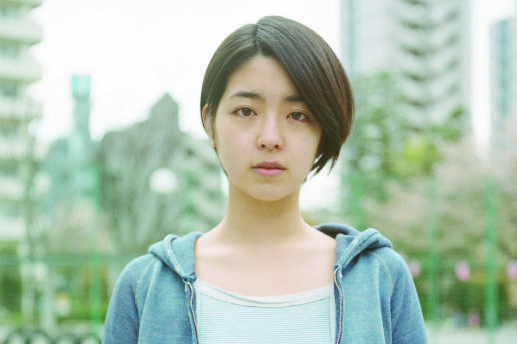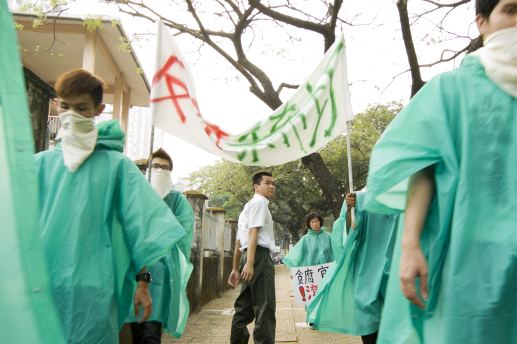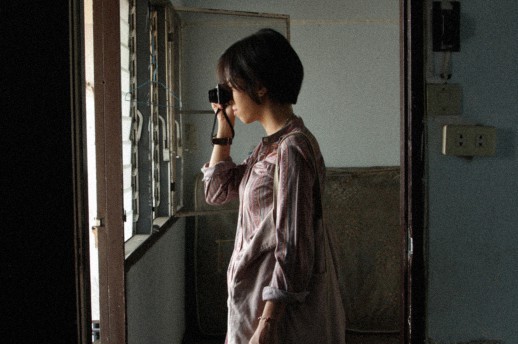TIFF 2014: Japan’s Leading Film Festival in Transition

Traditionally, film festivals have celebrated the people and productions that comprise national cinemas. This, at least, has been their public face, for they primarily serve as important markets and publicity events for distribution companies, which are the true locus of power and profit in the film industry. With the globalization of the industry, festivals now compete more directly for prestige and visibility, though Venice, Cannes, and Berlin still preside as the elder statesmen of the film world. In East Asia, the Japanese film industry may be the eldest, but the Tokyo International Film Festival (TIFF) dates only from 1985, and it has more recently come into competition with the Busan International Film Festival, today the preeminent film market in Asia.
In recent years, then, TIFF has been undergoing a gradual restructuring, in an attempt to expand its scope of influence and regain some of the prestige lost to its younger competitor across the Sea of Japan. As a part of Director-General Yasushi Shiina’s plan to raise the festival’s profile, the 27th installment of TIFF saw a few significant changes from previous years: the addition of a new section to spotlight Japanese anime, a new section entitled “Crosscut Asia” intended to enhance the promotion of Asian cinema, greater emphasis on supporting young talents, a rebranding exercise that includes a new logo, and the announcement of new venues. Since there are evidently a few rabbits lurking yet in Shiina’s hat, we must reserve judgment on his multi-year reorganization plan for the festival. Still, it seems fair to say that the challenges presently facing TIFF are deeper, systemic issues with the Japanese film business and government policy (that is, no policy on cinema also being a policy), which simply cannot be addressed within the constraints of the current festival-industrial complex.

Before addressing the ongoing renovation of the festival itself, a summary of some of this year’s most noteworthy films is in order. In the main competition, the Tokyo Grand Prix went to the Safdie Brothers’ Heaven Knows What, while the audience voted for Daihachi Yoshida’s Pale Moon. The latter, seemingly the story of an ordinary housewife (Rie Miyazawa), thematizes escape from the constraints of marriage subordinated to career and the oppressive work environment facing women in Japanese corporations. Other films worthy of note in the competition included Cédric Jimenez’s gently-retro yet thoroughly absorbing policier The Connection and, at the opposite pole of the budget spectrum, Edward Yeo’s River of Exploding Durians. Set in a Malaysian fishing town whose livelihood is threatened by a metal processing plant, Exploding Durians follows a high school student caught between his adolescent love and a fiery history teacher bent on radical social change. In the Special Screenings section, the most eagerly anticipated film was doubtless Mamoru Oshii’s GARM WARS. It proved, though, to be a dissonant chord of brilliant visuals, dubious story, and opaque performance that will likely appeal to only the most diehard of fans. Turning to the “Japanese Cinema Splash” section, Masaharu Take’s 100 Yen Love received broad acclaim for the extraordinary performance by Sakura Ando as a dissolute homebody who finds a sense of purpose and respect as an amateur boxer. While the section as a whole underwhelmed this reviewer, Shingo Ota’s Fragile and Takashi Nishihara’s Starting Over both stood out, Fragile being a meta-film about an aspiring documentarist’s voyage to the bottom layers of Osaka, and Starting Over as a simple but thought-provoking drama of a young woman’s search for love and family.
While the festival program as a whole remains largely unchanged from last year, there are two notable additions for 2014: the “Crosscut Asia” section, and a new section devoted to anime. If the former seeks to channel and define an emerging, regional conception of Asian cinema, the latter plays on one of the nation’s traditional strengths.

Sponsored by the Japan Foundation’s Asia Center, “Crosscut Asia” is a seven-year project to showcase specific “countries, directors, actors and themes.” For 2014, this section included eight new films from Thailand. Over the past decade, Thai independent cinema has received considerable attention, with Apichatpong Weerasethakul’s success at Cannes in 2010, and it is thus logical that “Crosscut Asia” programmed other Thai directors working outside the studio system. Of particular note is Nawapol Thamrongrattanarit, whose 36 begins as a seemingly unassuming story about technological memory loss (Thailand is the world’s second-largest maker of hard disc drives), that could have easily jolted half of the audience to rush home and back up their computers. Going forward, it appears that “Crosscut Asia” will be focused on indie films from some of the smaller Asian cinemas, especially those which could find distribution in domestic mini-theaters. To some extent, its mission overlaps with the program that Tokyo FILMeX has, since its inception, been exploring successfully. It remains to be seen how the Japan Foundation will distinguish this section from the FILMeX program. Although “Crosscut Asia” is being billed as an open-format section, it will likewise be interesting to see how the programmers define broader thematic or regional unities, beyond the traditional rubric of national cinemas, or if they would stretch to include a cinema as outsider-y as that of the DPRK.
The single change to receive the most attention in this year’s festival was a new section consecrated to anime (the first time since 2008 that TIFF has given focus to anime). The selection for 2014, “The World of Hideaki Anno,” was a major retrospective spanning from Anno’s modest beginnings as an amateur animator, to his mature works as a TV and feature film director, touching on nearly everything in between. The retrospective is encapsulated in two trailers for the program, with the longer Type A for a general audience, and the shorter, trippier Type B evidently for fans. The screenings were accompanied by a series of on-stage discussions between Anno and anime critic Ryusuke Hikawa, in which the director explored some of the little-known production history behind Gunbuster, Nadia, and Evangelion. As an opening gesture for a restored anime section in the festival, the care put into assembling “The World of Hideaki Anno” bodes well for the future. In conjunction with this program, TIFF summoned Pixar honcho John Lasseter to give a public talk in praise of Hayao Miyazaki and (what else?) Japanese cool, while Toshio Suzuki, the producer of Studio Ghibli, was on hand at another event to quietly smile through the many questions surrounding the studio’s post-Miyazaki shutdown and controversial decision to offshore some production to South East Asia. Amidst all this enthusiasm for anime, however, there was one noteworthy moment of discomfort, conspicuously omitted from the festival’s own press release. During the announcement of the new Samurai Award, Takeshi Kitano had some very frank words for the festival audience: “I hate anime, and Hayao Miyazaki most of all, but his animations make money, so I have respect for that.” Kitano’s comments were part of a broader criticism of the present troubled state of the Japanese film industry, especially the pernicious effects of its vertically-integrated structure of ownership and its ubiquitous co-production committees. This is not the first time that Kitano has spoken out, but on this occasion it was difficult not to read his remarks as an indirect criticism of the festival itself, and of its decision to foreground anime, however sensible and needed this may be, while stepping around some of the more difficult problems facing independent productions.
Although Kitano’s remarks will strike many as curmudgeonly or even downright spiteful, it must be emphasized that in an important sense he is correct. It is widely acknowledged that the film industry has in many respects become its own worst enemy, and this extends equally to the planning and marketing of its leading festival. Rather than viewing its core mission as a celebration of the richness of cinema, the talents who have made it all possible, or the deep history and multifarious relations between cinema, art, society, and popular culture, the festival planners have a tendency to favor dubious media tie-ins or bewildering dalliances with tarento (local celebrities). Why, for example, were idol group Arashi named this year’s “special festival ambassadors” and brought in with Prime Minister Shinzo Abe on the opening night? Oh, right, silly critics, we forgot just how, uh, important the Pikanchi franchise is to international film fandom, and just how much the Abe government has done for the Japanese film industry, didn’t we? Similarly, rather than giving attention to films that could actually benefit from being showcased at the festival, important parts of the program are handled more like strap-on booster rockets for offerings from the major distributors. For example, following this year’s mind-boggling popularity of those frosty, singing sisters, it is hard to see how the next bundle of joy from the Magic Kingdom, Big Hero 6, needs top billing in the festival. These are the types of planning decisions that leave critics mulling over polite ways to express their sense of bafflement and dismay.
Of course the rationale behind these various detours is simple: they represent an attempt to broaden the appeal of the film festival by extending its publicity beyond the sphere of film culture proper, and to leverage the big draws in a bid to attract audience around the smaller ones. Still, it seems fair to ask: how well is this strategy working? Attendance this year was 44,706 persons, which is up from 35,139 last year, but the total number of films also increased from 97 to 200. That means the average number of attendees per film dropped by almost 140. It goes without saying that these kinds of quantitative readings may not be terribly relevant, but most professional observers do seem to agree that the festival might be better served by a return to core competence (as, for example, Don Brown recently suggested).
Regardless of how we assess its present direction, TIFF remains an excellent venue to see new films from a broad range of markets, often well in advance of their theatrical premiere in Japan, and many which haven’t yet found distribution deals. Looking forward, next year’s installment may include screenings at the newest of new venues: Toho’s monster theater complex in Kabukicho, slated to open in spring of 2015. Stay tuned.
M. Downing Roberts
M. Downing Roberts



